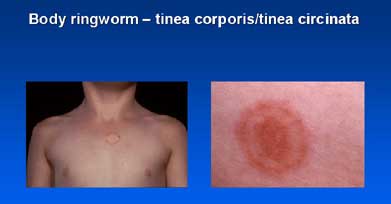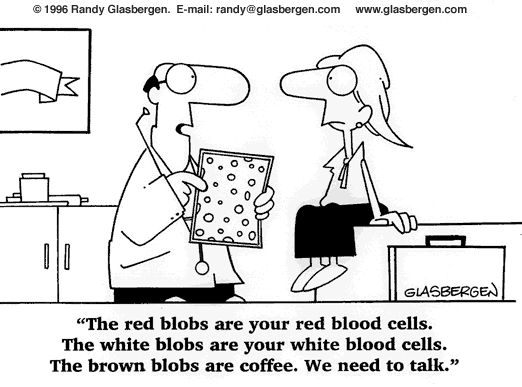Introduction: In 1900, life expectancies at birth in the United States were 47 years for white men, 40 for white women, 32 years for black men, and 34 years for black women. Within a century, the figures had changed to 73 and 79 for white men and women, 64 and 74 years for black men and women, respectively. In your groups, discuss the following:
![]() To what do you attribute the increased life expectancies?
To what do you attribute the increased life expectancies?
![]() In what way(s) has medical science contributed to this change?
In what way(s) has medical science contributed to this change?
![]() How can you explain the differences in the life expectancies of
racial groups?
How can you explain the differences in the life expectancies of
racial groups?
In prehistoric times, it was believed that evil spirits made people sick and, in order to get better, this spirit would have to be beaten, tortured or starved to drive it out. The Father of Medicine, Hippocrates, lived 2400 years ago and is responsible for moving medicine out of superstition. He believed that disease was related to weather, drinking water and winds in the town.
Early Greeks made medical diagnoses based on the four fluids, or humors - blood, phlegm, black bile, and yellow bile. They believed that these fluids had to be in equilibrium. When an individual had too little or too much of one of them, an imbalance that led to disease resulted. Too little fluid would require the patient to rest, change diet or take medications. Too much fluid would require the patient to undergo sweating, purging and bloodletting. (Leeches were often used in bloodletting. Today leeches are occasionally used to relieve blood congestion because the saliva contains an anticoagulant.)
Today we believe that disease results when there is a failure in an organism to maintain homeostasis.
![]() Define homeostasis.
Define homeostasis.
![]() Give two examples of homeostasis. (Note: you may use the web site or any
text.)
Give two examples of homeostasis. (Note: you may use the web site or any
text.)
When the body is pushed beyond its limits, diseases can result. In this project, we will begin to examine some of the various factors that contribute to this. Consider this....
![]() Infectious diseases are the leading
cause of death in the world. Of 52.2 million deaths in 1997, at least
17.3 million were due to infectious diseases.
Infectious diseases are the leading
cause of death in the world. Of 52.2 million deaths in 1997, at least
17.3 million were due to infectious diseases.
![]() Thirty
new diseases have been
identified over the past 20 years, among them the deadly Ebola and HIV/AIDS.
Thirty
new diseases have been
identified over the past 20 years, among them the deadly Ebola and HIV/AIDS.
![]() In the long history of struggle
against infectious diseases, humans have only managed to conquer one:
smallpox, which was declared eradicated in 1980
In the long history of struggle
against infectious diseases, humans have only managed to conquer one:
smallpox, which was declared eradicated in 1980
![]() Polio has already been eliminated
from the western hemisphere, and is targeted for global eradication very
soon
Polio has already been eliminated
from the western hemisphere, and is targeted for global eradication very
soon
Fun facts about microbes
|
They don't look like this! |
|
-
Scientists group microbes by the way they look, move, eat and reproduce.
-
Without microbes, there would be no chocolate!
-
The "wonder drug" called penicillin is actually made from a fungus
-
Only a small fraction of all the world's microbes can make people sick.
-
If all the fungi and bacteria were to disappear, the world would soon fill up with garbage.
-
Bacteria produce nearly half of the world's oxygen.
-
There are 200 known common cold viruses.
-
Microbes make your milk go sour and your bread get moldy, but they also help you digest your foods.

Photo Gallery
|
What am I? What do I cause? (click on Helicobacter pylori)
|
 This disease is known as ringworm
and it is not
caused by a worm. Find out about it.
This disease is known as ringworm
and it is not
caused by a worm. Find out about it.
|
This is what the liver looks like when it has been abused with too much alcohol. (below left) Find out more about cirrhosis of the liver.
|

Many diseases have a genetic component.
|

|
Some diseases caused by animals:
| Disease | Symptoms | Carrier |
|---|---|---|
Bubonic plague |
Painful swelling, high fever, body aches |
Rat, flea (bacteria) |
Elephantiasis |
Rough, thickened skin, body swelling |
Worms |
Lyme disease |
Rash, fatigue, muscle and joint pain |
Deer tick (bacterial) |
Malaria |
Chills, weakness, fever, excessive perspiration |
Mosquito (protozoan) |
Plague typhus |
Fever, skin rashes |
Flea, lice, chipmunk, prairie dog, squirrel |
Rabies |
Headaches, muscle spasms, convulsions |
Woodchuck, bat, raccoons (virus) |
Rocky Mountain spotted fever |
Chills, fever, rash, leg pain |
Wood tick (bacteria) |
Sleeping sickness |
Attacks nervous system; results in prolonged sleep |
Tsetse fly |
Trichinosis |
vomiting, fever, face swelling, pain |
worms in pigs |
1. Define the following terms and place in your Bio/English Glossary:
immunity |
disorder |
antigen |
antibody |
pathogen |
autoimmune |
pollutant |
malfunction |
macrophage |
vaccination |
2. The body has three levels of defense against diseases caused by microorganisms:
The first line of defense is nonspecific. What physical barriers do we have that offer us defense from invading pathogens?
The second line of defense is activated if the microorganism manages to get through the physical barriers established as our primary defense mechanism. Describe what is known as the inflammatory response.
The final line of defense has evolved in vertebrates and it involves attacking the specific invaders. This involves what is known as the immune system. Discuss the role of the B cells and T cells in this response. In what way are B cells and their antibodies similar to enzymes and their substrates. In what way are Helper T cells like a catalyst in a chemical reaction?
3. What is passive and active immunity? Discuss the technique known as vaccination. Apply what you have learned to the disease tetanus.
4. How does AIDS affect the immune system? Try this site too!
5. Wellness is defined as a lifestyle, that is, how one lives. How one lives is a result of many factors, many of which are outside our control. Most factors, however, are within our control. What are some of these factors? What are some diseases associated with "reckless" behavior?
Have you done yours today?
|
|
 |
 |
6. Complete the assignment "What's Up With Jane,Doc"
7. Bioterrorism
8. Introduction to POPS.(Patient Oriented Problem Solving)
- Read Why Is He So Weak and complete the sheet.
- Complete You're The Doc! for the above case.
- Each group will read about one of the following cases and complete the Case
History: You're the Doc for it.
- "Fuel for Thought" (diabetes)
- "Swollen Joints, "Wandering" Pain, Sore Throat and Fever" (rheumatic fever)
- "A Killer Raves On" (rabies)
- "Mystery Rash" (measles)
- "A Tumor Disguised by Puberty"
- "Much Too Tired" (Sleeping Sickness)
- "Diagnosis: Seizures that Won't Stop, A 102 Fever, An Infection in the Blood (Munchausen's Syndrome)
- "Diagnosis: Rapid Weight Loss, Garbled Speech, Body Moving in a Restless Dance" (overdose of medicine)
- "The Great Pretender" (aortic dissection)
9. In class we will read and discuss the history of the drug Thalidomide.
10. Following our unit on molecular genetics, the disease Sickle Cell Anemia will be explored.
http://www.drkoop.com/ - At this site you will find a medical encyclopedia, drug information and advice on many diseases. Take the "Preventionnaire" to see how fit you are. If the results are scary, visit the Stress Management page.
http://www.healthfinder.gov/ - This site was developed by the U.S. Department of Health and Human Services and is a gateway to medical resources on the Net. It will connect you to databases that let you search the entirety of the medical literature.
http://www.mayohealth.org/ - At this site physicians and scientists from the famed Mayo Clinic share their expertise.
http://www.kidshealth.org/parent/medical/index.html - This is a site for parents dealing with childrens' health problems. Easy to understand.
http://www.cdc.gov/health/diseases.htm - This site is maintained by the Center for Disease Control in Atlanta and diseases can be accessed alphabetically.
You may also use other resource materials available in your classroom.

Stay well
Return Home Return Hospital Program
created by Joyce Kent
Albert Leonard Middle School
August, 00, January, 02




